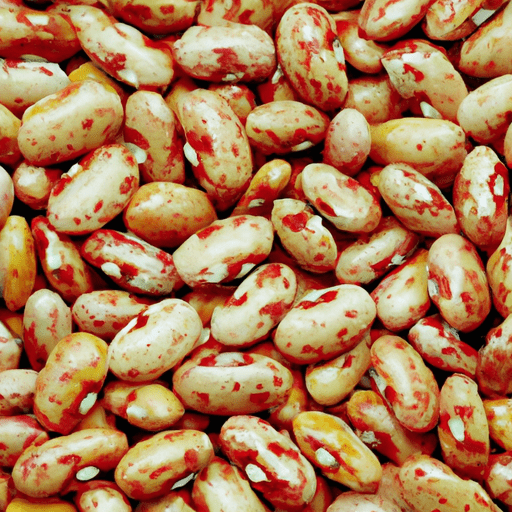Discover the Delights of Dried Corona Beans
If you’re a fan of hearty, flavorful legumes, then you’re in for a treat with dried corona beans. These large, ivory-colored beans are a true gem of the culinary world, known for their rich taste and versatility in a variety of dishes. Whether you’re a vegetarian, vegan, or simply love exploring new ingredients, dried corona beans will surely impress.
The Taste and Texture
Dried corona beans have a creamy, buttery flavor paired with a slightly nutty undertone, making them stand out from other beans. Their texture is tender yet substantial, offering a satisfying mouthfeel that complements a range of recipes. When cooked, these beans maintain their shape and hold up well without turning mushy – perfect for adding substance to soups, stews, and salads.
Culinary Uses
The beauty of dried corona beans lies in their versatility. They effortlessly elevate both hearty and lighter dishes, adding depth and robustness. Here are some popular ways to incorporate dried corona beans into your cooking:
1. Soups and Stews
Dried corona beans are a staple ingredient in classic bean-based soups and stews. They absorb flavors beautifully, making them an ideal partner for aromatic herbs, vegetables, and savory broths. Whether you’re simmering them in a comforting minestrone or hearty chili, these beans add a satisfying richness to your bowl.
2. Salads and Sides
For a lighter option, incorporate cooked corona beans into refreshing bean salads or as an accompaniment to grilled vegetables. Their creamy texture provides a lovely contrast to crisp greens and enhances the overall balance of flavors. Tossed with a zesty vinaigrette or herbs, they make for a memorable side dish or a standalone light lunch.
3. Purees and Dips
When mashed or pureed, corona beans transform into a velvety base for dips and spreads. Whip them together with garlic, lemon juice, and olive oil for a delightful bean dip or create a creamy hummus-like spread. The result is a lusciously smooth and flavorful accompaniment for crunchy bread, pita, or crudités.
Nutritional Value
Aside from their remarkable taste and culinary potential, dried corona beans are a treasure trove of nutrients. Packed with fiber, plant-based protein, minerals, and vitamins, they offer a range of health benefits. Some notable nutritional highlights include:
- Fiber: Dried corona beans are an excellent source of dietary fiber, supporting a healthy digestive system and promoting a feeling of fullness.
- Protein: These beans are a fantastic plant-based protein option, making them especially valuable for vegetarians and vegans.
- Iron: They are a good source of iron, contributing to healthy red blood cell production and oxygen transport throughout the body.
- Potassium: Dried corona beans are also rich in potassium, an essential mineral that helps regulate blood pressure and maintain heart health.
A Brief History
Believed to have originated in the highlands of Central and South America, corona beans have a long and fascinating history. These beans were cultivated by the ancient Incas and Mayas, who cherished them for their substantial nutritional value.
Later, corona beans made their way across continents during the European colonization of the Americas. They gained popularity in Italian cuisine, where they were referred to as “cannellini” due to their resemblance to small tubes (“cannella” translating to “little tube” in Italian). Today, these beans continue to be enjoyed worldwide, cherished for their versatility and delightful taste.
Dried corona beans are a culinary treasure, bringing richness, flavor, and nutrition to a variety of dishes. Their creamy texture, mild yet distinctive taste, and adaptability make them a fantastic addition to your pantry. Whether you’re enjoying a hearty soup, refreshing salad, or satisfying dip, corona beans will elevate your culinary creations to new heights. So go ahead and embark on a flavorful adventure with these delightful beans – your taste buds will thank you!
Origin
- Dried corona beans, also known as borlotti beans, are native to South and Central America, specifically Peru and Mexico.
- They were introduced in Europe in the late 16th century by Italian explorers.
Common Uses
- Dried corona beans are often used in Italian cuisine, particularly in dishes like pasta e fagioli and minestrone.
- They can be cooked and served as a side dish, or added to salads, soups, stews, and casseroles.
- In Mexican cuisine, they are utilized in dishes such as refried beans and chili con carne.
Nutritional Benefits
- Dried corona beans are an excellent source of plant-based protein, making them a nutritious option for vegetarians and vegans.
- They are also a good source of dietary fiber, which promotes healthy digestion and helps maintain blood sugar levels.
- Corona beans provide important minerals such as iron, magnesium, and potassium.
- They are low in fat and cholesterol, making them a heart-healthy choice.
Unique Properties and Historical Significance
- The name “borlotti” comes from the Italian word “borlotto,” which means “speckled.”
- Dried corona beans have a distinctive appearance with their pinkish-red color and speckled pattern.
- Traditional folklore associates corona beans with the healing of snake bites due to the appearance of their seeds resembling snake eyes.
- In ancient Rome, corona beans were highly regarded and often used as an offering to the gods during rituals and religious ceremonies.




Use the share button below if you liked it.
It makes me smile, when I see it.